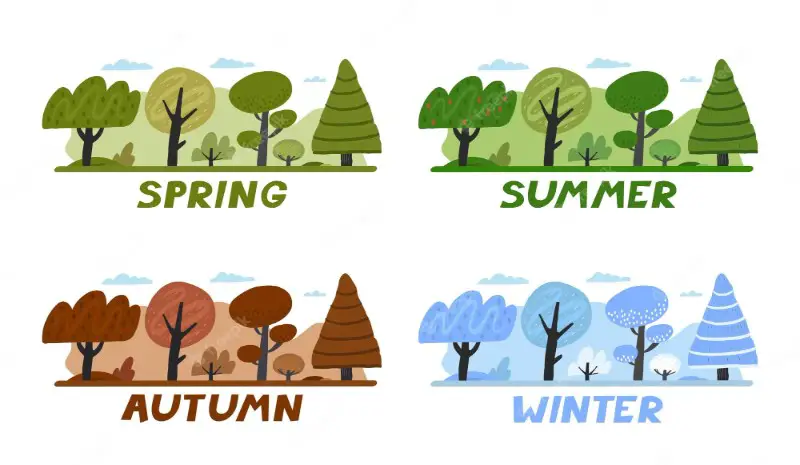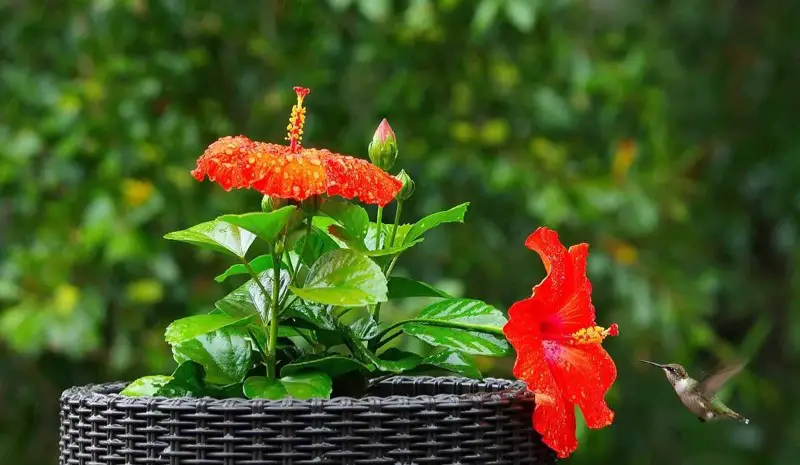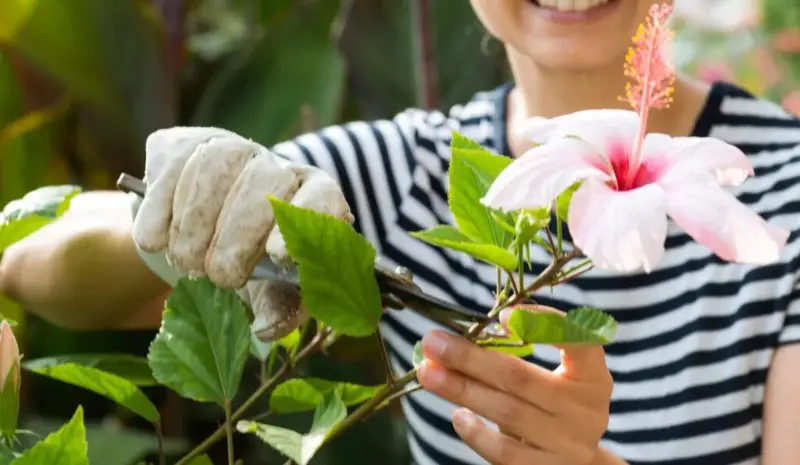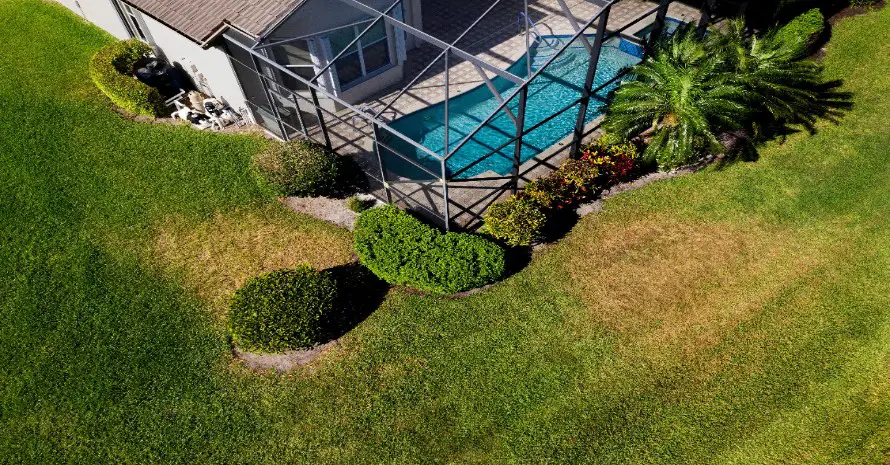Hibiscus plants are popular for their vibrant and eye-catching flowers. Watching these lovely blooms come to life can be an exciting and rewarding experience for any gardener. However, understanding when a hibiscus plant is likely to bloom can be a bit perplexing.
A hibiscus plant is a flowering shrub native to warm and tropical climates as well as some sub-tropical regions. It belongs to the mallow family, Malvaceae. The plant has several common names, including rose mallow and swamp mallow. Hibiscus plants have colorful, trumpet-shaped flowers that come in a variety of vibrant shades, and they can be a single or double bloom.
There are several factors that impact the flowering cycle of a hibiscus plant, including seasonal changes, light exposure, water and fertilization, pruning, age of the plant, genetics, and growing zone. In this comprehensive guide, we will explore each of these factors in detail, as well as common issues that can impact hibiscus blooming. By the end of this article, you will have a better understanding of when your hibiscus plant is likely to bloom and how to ensure it blooms to its full potential. Let’s get started!
Seasonal Changes

Seasonal changes have a significant impact on when a hibiscus plant will bloom. Typically, hibiscus plants bloom in response to increasing daylight hours and warmer weather, both of which occur during the spring and summer months. As the days grow longer, it signals the hibiscus plant that it’s time to produce blooms. On the other hand, during the fall and winter months, when days are shorter, hibiscus plants enter a dormant phase, and their growth slows significantly.
During this time, it’s unlikely that the plant will produce flowers, although it’s possible in some tropical climates where the temperature remains warm throughout the year. In areas with cooler climates, hibiscus plants can be brought indoors over the winter months to protect them from the cold, which can help to extend their blooming period. Seasonal changes play a crucial role in determining when a hibiscus plant will bloom, and it’s important to understand the natural rhythm of the plant to ensure optimal blooming.
Are you looking to elevate your gardening game and create a flourishing oasis in your backyard? We’ve got just the article for you! Explore our latest blog post, “7 Best Trench Digging Tools for Your Garden” where we delve into the must-have tools to make your gardening tasks a breeze. Unearth the secrets to efficient trench digging and say goodbye to back-breaking labor!
Light Exposure
Light exposure is a critical factor in determining when a hibiscus plant will bloom. To produce lush and vibrant blooms, hibiscus plants require plenty of sunlight. A lack of sunlight or too much shade can negatively impact blooming. The ideal amount of light for hibiscus plants is around six hours of sunlight per day. To ensure that your hibiscus receives the right amount of light exposure, consider the following factors:
- Location: Place the hibiscus plant in an area where it will receive ample sunlight. If you’re planting outdoors, avoid areas with too much shade or where nearby trees or shrubs may block the sun’s rays. For indoor plants, consider using grow lights to supplement natural light.
- Season: As the seasons change, light exposure also varies. During the summer, hibiscus plants should receive plenty of direct sunlight. However, during winter, they may require extra protection from harsh winds and colder temperatures.
- Intensity: The intensity of the sun’s rays can also impact hibiscus blooming. Too much direct sunlight can lead to scorching of the leaves and flowers, while too little sunlight can stunt growth and blooming. If planting outdoors, consider using shade cloths or netting to regulate the amount of sunlight your hibiscus plant receives.
By ensuring that your hibiscus plant receives adequate light exposure, you can help ensure that it blooms to its full potential. Remember to monitor the sunlight conditions regularly and make necessary adjustments as needed.
Water & Fertilization
Water and fertilization are two critical factors that impact the blooming of hibiscus plants. For optimal growth and flowering, hibiscus plants require regular watering, particularly during the growing season.
However, it’s important to ensure that the soil doesn’t become waterlogged, as this can lead to root rot and other issues. Generally speaking, hibiscus plants need to be watered about once per week, but the frequency may need to be adjusted depending on the size of the plant and the climate. In addition to regular watering, hibiscus plants also require proper fertilization.
A balanced fertilizer with equal parts nitrogen, phosphorus, and potassium is ideal for promoting robust growth and flowering. Fertilizing should be done every two weeks during the growing season, and it’s important to follow the recommended dosage instructions carefully. Over-fertilization can lead to excessive foliage growth at the expense of blooms, so it’s crucial to strike the right balance.
Finally, it’s worth noting that hibiscus plants can be sensitive to the pH level of the soil. Ideally, the soil should be slightly acidic, with a pH range between 6 and 6.5. If the pH is too high or too low, it can impact the plant’s ability to absorb nutrients and can lead to a lack of blooms. Consider testing the soil regularly and making adjustments as needed to ensure optimal growing conditions for your hibiscus plants.
Pruning & Pinching
Pruning and pinching are essential tasks in the care of a hibiscus plant and can play a significant role in its blooming cycle. Pruning refers to the removal of dead, damaged, or diseased parts of the plant while pinching involves the removal of new growth tips to encourage branching and a bushier growth pattern. It is important to note that the timing and technique of pruning and pinching can vary depending on the type of hibiscus plant.
For tropical hibiscus plants, pruning should be done in spring or early summer before the blooming season. Cut back up to one-third of the length of each branch, aiming for a rounded shape. Pinching should be done throughout the growing season and can help to prevent the plant from becoming too leggy and sparse. Hardy hibiscus plants, on the other hand, should be pruned in late fall or early spring, once the plant has gone dormant and all the leaves have fallen off.
Cut back to about 6 inches above the ground, and remove any broken or damaged stems. Pinching can be done in early summer, once the plant has grown to about 6 inches tall. Pinch off the top 2-3 inches of growth to promote branching. Perennial hibiscus plants, including hybrid varieties, should be pruned in late winter or early spring before new growth appears. Cut back to about 6 inches above the ground, removing any broken or dead stems.
Pinching can be done throughout the growing season to promote branching and a bushier growth pattern. Regular pruning and pinching can help to keep a hibiscus plant healthy and encourage optimal blooming. Be sure to choose the right timing and technique depending on the type of hibiscus plant you have, and enjoy the beautiful blooms that result from your efforts.
If you’re interested in finding the perfect hand saw for cutting tree branches, I invite you to check out our latest article titled ‘Best Hand Saw for Cutting Trees.’ In this comprehensive guide, we explore a range of top-notch hand saw options that will make your tree-cutting tasks a breeze.
Age of the Plant

The age of the hibiscus plant is another factor that can impact blooming. Typically, hibiscus plants will not produce any flowers during their first year of growth. However, once the plant reaches maturity, usually within two to three years, it will begin to produce flowers. The older the plant is, the more it will bloom. In fact, some hibiscus plants can continue to produce blooms for decades if well taken care of. It is worth noting, however, that as the plant ages, its growth rate may slow down, and its peak bloom period may be shorter.
Additionally, older hibiscus plants may become less tolerant of environmental stressors, such as heat or cold, and may require more care and attention than younger plants. To ensure that your hibiscus plant reaches maturity and blooms to its full potential, it is important to provide it with proper care, including adequate fertilization, pruning, and watering and protection from pests and diseases. Regular maintenance and upkeep can help extend the lifespan of your hibiscus plant and keep it blooming year after year.
Genetics
Genetics also plays a significant role in the blooming cycle of hibiscus plants. The genetics of the plant can determine the color, size, and shape of the flowers, as well as the duration and frequency of blooming. Some hibiscus varieties, for example, bloom continuously throughout the year, while others only bloom once per year. The genetic makeup of the hibiscus plant also affects its overall growth and hardiness, as well as its resistance to pests and diseases.
Plant breeders have been able to produce new hibiscus varieties that possess desirable characteristics such as longer blooming periods, unique coloring, and larger flowers, using crossbreeding techniques. Some of these hybrid plants may require more specialized care, however, and may not be as hardy as traditional hibiscus plants. It is worth considering the genetic makeup of a hibiscus plant when selecting a variety to plant, especially if you have a specific color or blooming cycle in mind, or if you are looking for a particular level of hardiness.
Different Types of Hibiscus Plants and Their Blooming Cycles
There are several types of hibiscus plants, and each has its own unique blooming cycle. Tropical hibiscus is a common variety that typically blooms from early summer until late fall. Hardy hibiscus, also known as rose mallows, tend to bloom later in the summer, usually from July until September. Perennial hibiscus is another variety that blooms in late summer and early fall. Container-planted hibiscus can bloom at different times depending on the type of hibiscus and its growing conditions.
Additionally, the growing zone and climate can play a significant role in the blooming cycle of hibiscus plants. For example, hibiscus plants grown in warmer climates may bloom year-round, while those grown in cooler climates may only bloom seasonally. Understanding the type of hibiscus plant you have and its blooming cycle is crucial in caring for and maintaining its overall health and beauty.
Tropical Hibiscus

Tropical hibiscus plants are known for their lush, green foliage and magnificent showy blooms. These plants are native to warmer climates, including South America, Central America, and the Caribbean. Tropical hibiscus plants come in a wide variety of colors, including red, pink, yellow, orange, and even purple. They typically bloom all year round, although the frequency of blooming varies depending on the plant’s growing conditions.
To bloom, tropical hibiscus plants require plenty of sunlight, and regular watering and fertilization. These plants prefer slightly acidic soil with good drainage, and they are sensitive to cold temperatures and frost. In colder climates, tropical hibiscus plants are often grown as indoor houseplants or greenhouses. With proper care, tropical hibiscus plants can provide beautiful blooms all year round, making them a popular choice for gardeners and flower enthusiasts alike.
Hardy Hibiscus
Hardy hibiscus plants are native to North America, and they are also known by their scientific name, Hibiscus moscheutos. These plants are also called rose mallow or swamp mallow and are a popular choice for gardeners in colder climates. Hardy hibiscus plants are perennials, meaning they come back year after year. Their blooms come in a variety of colors, including white, pink, red, and purple, and can be as large as 12 inches in diameter.
These plants typically bloom in the summer months, with some varieties continuing to bloom into fall. They prefer total sun exposure and well-draining soil and can grow up to 5 feet tall and 4 feet wide. Unlike tropical hibiscus plants, hardy hibiscus plants are resistant to colder temperatures, and some varieties can survive winters in USDA Hardiness Zones 4-5. Gardeners should be sure to prune their hardy hibiscus plants in the early spring to promote healthy growth and flowering during the growing season.
Perennial Hibiscus
Perennial Hibiscus, also known as hardy hibiscus, is a type of hibiscus plant that is able to survive cold winters in more northern regions. Unlike tropical hibiscus, which is sensitive to cold temperatures and must be grown in warm and humid regions, perennial hibiscus can be grown in garden beds or borders in USDA growing zones 4 to 9.
They come in a variety of colors and can produce blooms up to 10 inches wide. Perennial hibiscus plants are typically larger than tropical hibiscus, with some varieties growing up to 8 feet tall. They require full sun and well-draining soil to thrive. In terms of blooming, they tend to flower later in the season, starting in mid to late summer and lasting through early fall, usually from July to September.
Once established, perennial hibiscus is a low-maintenance plant that can be left to grow on its own with just light pruning in the spring to promote healthy growth. With their large and striking blooms, perennial hibiscus plants can make a beautiful addition to any garden.
Container-Planted Hibiscus
Container-planted hibiscus, as the name suggests, are hibiscus plants grown in containers instead of directly in the ground. This method is ideal for those who have limited gardening space or for those who want to bring the hibiscus plant indoors during colder months. Container hibiscus plants come in various sizes, making them perfect for balconies, patios, or indoor spaces. They can grow up to 8 feet tall, but there are also smaller varieties that will only grow up to 6-12 inches.
Container-planted hibiscus requires special care and attention to thrive. Proper moisture and sunlight are essential to a healthy container hibiscus plant, so be sure to choose a container with drainage holes to avoid water buildup. Use well-draining soil that retains moisture and organic matter. Regular feeding with a water-soluble fertilizer is also recommended during the growing season.
Container-planted hibiscus blooms typically last slightly shorter than those of the ground-planted varieties. When the plant has outgrown its container, repotting into a larger container or transplanting it to the ground may be necessary to ensure continued growth and blooming. Hibiscus plants grown in containers can bring a vibrant pop of color to any space, while still being relatively easy to care for.
Growing Zone & Climate
One of the most important factors that can impact the blooming cycle of a hibiscus plant is the climate and growing zone. Hibiscus plants thrive in warm and tropical climates, and they are often found growing in countries such as Brazil, China, and India. However, these plants can also grow in sub-tropical regions and can be successfully cultivated in other parts of the world, too.
Different species and varieties of hibiscus may have different temperature and humidity requirements, so it’s important to understand the optimal conditions for your particular hibiscus plant. For example, tropical hibiscus plants typically thrive in temperatures between 60-90 degrees Fahrenheit and require high humidity levels. Hardy hibiscus plants, on the other hand, can tolerate colder temperatures and are often found in USDA growing zones 4-9.
Before planting a hibiscus, make sure to research the ideal growing conditions for your specific type of plant. Hibiscus plants are relatively low-maintenance but require adequate water, sunlight, and soil nutrients to thrive. Ensuring that your hibiscus plant is in the right growing zone and climate will go a long way in ensuring that it blooms to its full potential.
Common Issues That Affect Hibiscus Blooming
Unfortunately, several issues could affect hibiscus’ blooming, including pests and diseases, inadequate light or water, improper temperature or humidity, over or under-fertilization, and lack of pruning or pinching. Pests that are more prone to attack hibiscus plants include aphids, spider mites, mealybugs, and thrips, and diseases such as anthracnose and fungal leaf spots can also cause leaves to drop and prevent the plant from blooming.
Hibiscus plants are sensitive to light, and they need adequate light exposure to thrive. If they don’t receive enough sunlight or are placed in areas with insufficient light, their blooming may be affected directly. Over or under-watering can cause stress to hibiscus plants, leading to root rot that could ultimately affect the plant’s blooming.
Excessive application of fertilizers can be toxic to the plant and cause damage to the roots, leading to poor blooming. Lastly, if hibiscus plants are not pruned or pinched regularly, they may become overcrowded, which could prevent them from blooming to their full potential.
Pests & Diseases
Pests and diseases can have a significant impact on the blooming cycle of your hibiscus plant. Here are some of the most common pests and diseases that can affect hibiscus plants:
| Pest or Disease | Symptoms | Treatment |
|---|---|---|
| Aphids | Leaves may curl or be yellow. A sticky residue called honeydew may also be present. | Spray plants with a strong stream of water or insecticidal soap. |
| Spider Mites | Leaves may be yellow or have a stippled appearance. Fine webbing may also be present. | Spray plants with a strong stream of water or insecticidal soap. |
| Mealybugs | White, cotton-like masses may be found on the undersides of leaves or along the branches of the plant. | Spray plants with a strong stream of water or insecticidal soap. |
| Scale | Tiny bumps may appear on the leaves or stems of the plant. A sticky residue may also be present. | Spray plants with a strong stream of water or insecticidal soap. Cut off any severely infested branches. |
| Anthracnose | Brown or black spots may appear on the leaves or flowers of the plant. | Remove any infected leaves or flowers immediately. Spray plants with a fungicide. |
| Mosaic Virus | Leaves may have a mottled appearance or yellow streaks. | There is no cure for the mosaic virus. Remove infected plants immediately to prevent spreading to other plants. |
Preventing pests and diseases is crucial to the overall health and blooming cycle of your hibiscus plant. Regularly inspect your plant for any signs of pests or diseases and take immediate action if necessary. Keeping your plant well-watered and fertilized can also help prevent issues.
Discover effective strategies and expert advice on banishing those pesky soil mites in our latest article, “How to Get Rid of Soil Mites” Learn more about identifying soil mites, understanding their impact on plants, and implementing proven methods to eliminate them naturally.
Inadequate Light or Water
Inadequate light and water are two of the most common reasons why a hibiscus plant may fail to bloom. Hibiscus plants require plenty of light, with a minimum of six hours of direct sunlight per day to thrive. If the plant is not getting enough light, its growth will slow down, and it may not produce any blooms.
It is also essential to ensure that the hibiscus plant is getting enough water. Hibiscus plants require consistent levels of moisture, with the soil remaining moist but not waterlogged. If the plant is not getting enough water, the leaves may be yellow or wilt, and the buds may drop off before they have a chance to bloom.
Additionally, hibiscus plants are sensitive to changes in temperature and humidity levels, which can also impact their growth and bloom cycles. To ensure that your hibiscus plant has the best chances of blooming, be sure to provide it with plenty of light and water and monitor the temperature and humidity levels of the surrounding environment.
Improper Temperature or Humidity
Hibiscus plants are native to warm and tropical climates, and they require a specific temperature and humidity range for optimal growth and blooming. When exposed to improper temperature or humidity, hibiscus plants can become stressed and less likely to bloom. The ideal temperature for hibiscus plants is between 60-90°F, and they prefer a humidity level between 50-60%. Low humidity can cause the leaves to dry out and drop, while high humidity can lead to fungal diseases and pests. If the temperature drops below 50°F for an extended period, the hibiscus plant may go dormant, which can impact its flowering cycle.
Additionally, sudden changes in temperature or exposure to a draft can also cause hibiscus plants stress and result in less blooming. It’s important to monitor the temperature and humidity levels around your hibiscus plant to ensure it has optimal growing conditions.
You can use a humidifier or a pebble tray to increase humidity levels, and you can move your hibiscus plant to a cooler or warmer spot in your home or garden depending on its needs. By providing the right temperature and humidity conditions, you can encourage your hibiscus plant to bloom to its full potential.
Over- or Under-Fertilization
Over- or under-fertilization can significantly impact the blooming cycle of hibiscus plants. When under-fertilized, hibiscus plants have yellow leaves and weak stems, and they are more susceptible to pests and diseases. If over-fertilized, hibiscus plants may grow too quickly, leading to tall and spindly plants with a reduced number of flowers.
The excessive use of fertilizer can also result in the accumulation of salts in the soil, which can cause root damage and limit the plant’s ability to absorb nutrients. To prevent over- or under-fertilization, it is essential to use a balanced fertilizer, with equal amounts of nitrogen, phosphorus, and potassium.
Fertilizer should be applied to hibiscus plants every two weeks during the growing season, and the frequency should be reduced during the dormant period. It is also important to avoid using too much fertilizer at once, as this can cause soil burn and lead to permanent damage to the plant. By providing adequate fertilization, hibiscus plants will receive the nutrients they need to thrive, and they will be more likely to produce healthy and abundant blooms.
Lack of Pruning or Pinching

Lack of pruning or pinching can be a major factor that affects hibiscus blooming. Hibiscus plants grow quite quickly, and if they’re not pruned regularly, they can become too large and bushy. This bloated growth can divert the plant’s energy from blooming, leading to a delayed or reduced blooming cycle.
Additionally, hibiscus plants tend to produce new shoots from the tip of their branches. By pinching off these new shoots, you can encourage the plant to grow in a more compact and bushy shape, which, in turn, can help promote more abundant blooming. The best time to prune or pinch your hibiscus plant is in the spring or early summer when new growth is just starting.
However, you should avoid pruning or pinching your plant later in the growing season to avoid damaging the buds which will eventually lead to blooming. When pruning, always use clean and sharp pruning shears, and make cuts at a 45-degree angle to promote healthy growth. By regularly pruning and pinching your hibiscus plant, you can help ensure that it remains healthy and productive, with consistent and vibrant blooming.
Conclusion
Hibiscus plants are a beautiful addition to any garden or landscape, with their eye-catching blooms and attractive foliage. Understanding when a hibiscus plant is likely to bloom can help you to care for it more effectively, and ensure that it blooms to its full potential. By paying close attention to factors like seasonal changes, light exposure, water and fertilization, pruning, age of the plant, genetics, and growing zone, you can help your hibiscus plant thrive and produce gorgeous blooms.
However, it’s also important to be aware of common issues that can impact hibiscus blooming, such as pests and diseases, inadequate light or water, improper temperature or humidity, over- or under-fertilization, and lack of pruning or pinching. By taking the time to care for your hibiscus plant properly and addressing any issues that arise, you can enjoy its beauty and splendor for many years to come.
Frequently Asked Questions
What is the best time to plant a hibiscus?
The best time to plant hibiscus is in the spring, after the last frost has passed, or in the early fall. Planting during these times allows the roots to establish before extreme weather conditions occur.
How often should I water my hibiscus plant?
Hibiscus plants require frequent watering, especially during sunnier, warmer months. Ideally, water your hibiscus plant daily in the morning. Water again in the evening during periods of extreme heat to ensure the soil remains moist.
What type of soil is best for hibiscus plants?
Hibiscus plants prefer well-draining soil that is slightly acidic with a pH of 6.0 to 6.5. Adding organic matter, such as compost, can help improve soil texture and provide nutrients.
How often should I fertilize my hibiscus plant?
Hibiscus plants require frequent fertilization during the growing season, typically every two weeks with a balanced fertilizer. Reduce the frequency to once a month during the flowering season.
What is the best way to prune a hibiscus plant?
Pruning a hibiscus plant is best done in early spring, before new growth appears. Focus on removing dead or diseased wood, and prune the plant to shape and promote new growth. Pinch the tips of new growth to encourage branching and more blooms.
What is the difference between tropical and hardy hibiscus plants?
The primary difference between tropical and hardy hibiscus plants is their hardiness. Tropical hibiscus plants are best suited for warm climates, while hardy hibiscus plants can withstand colder temperatures. Tropical hibiscus plants typically have smaller flowers and brighter colors.
Why is my hibiscus plant not blooming?
There are several reasons why hibiscus plants may not bloom, including inadequate light, improper watering, nutrient deficiencies, or age of the plant. Consider adjusting the plant’s environment or fertilization routine, and wait for the next blooming season.
Can I grow hibiscus plants in a container?
Yes, hibiscus plants can be grown in containers. Choose a large container with good drainage, and use a well-draining soil mix. Containers should be placed in a sunny spot, and plants should be watered frequently.
What types of pests are known to affect hibiscus plants?
Common pests that can affect hibiscus plants include aphids, mealybugs, spider mites, and thrips. Monitor your plants regularly and treat infestations quickly to prevent damage.
How can I protect my hibiscus plants during the winter?
In colder climates, hibiscus plants may not survive the winter outdoors. To protect them, you can either bring them indoors or cover them with a protective layer of mulch or fabric. Be sure to remove the coverings in the spring once the risk of frost has passed.




